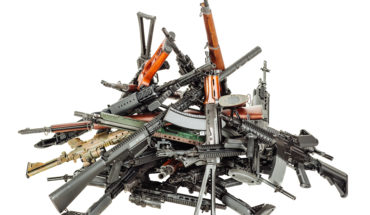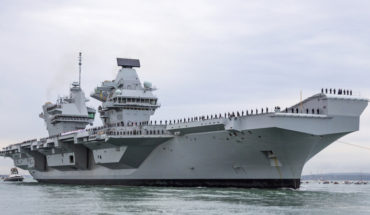Rifle Rivalry: Russia’s AK-12 vs the Czech’s CZ 805 BREN in the fight to future-proof the infantry soldier
Infantry soldiers fighting on the front lines of the Russo-Ukrainian war have utilised a diverse array of assault rifles, particularly regarding their modernity. Ukrainian troops have utilised the most antiquated of all automatic rifles, the Chinese Type 56, which itself is a licensed reproduction of the ubiquitous AK-47 that had initially entered Soviet Military service in 1949. The Type 56 has been provided as a training rifle by the British Government’s Ministry of Defence for Infantry manoeuvre exercise taking place on UK soil.
However, substantial quantities of Type 56 rifles captured from Iranian Shipments to their Houthi allies in Yemen by the US Navy, have been transferred to the Armed Forces of Ukraine (AFU).
Currently, It is unclear as to whether Ukraine’s Ministry of Defence intends to equip it’s frontline troops with these outmoded second hand firearms. Nevertheless, given the desperation experienced by Ukrainian combatants on the front line, particularly regarding logistical supplies of ammunition and contemporary weaponry, it would be unsurprising if they were to make their combat debut at some stage during this protracted conflict. Despite it’s obsolesce, the Type 56 typically chambered in 7.62 Soviet rimless intermediate cartridges. Developed initially for the AK-47, the 7.62 Soviet cartridges are globally available in enormous quantities and compatible with the majority of other Kalashnikov-series rifles and numerous other designs from post-soviet states such as Ukraine. This unparalleled degree of versatility allows for seamless inter-operability of ammunition between the service rifles issued to both regular Ukrainian units as well as the paramilitary Territorial Defence Force partisans.
On the extreme contemporary end of the barometer and the two assault rifles of focus for this piece are the Czech CZ 805 Bren and the Russian AK-12, which were inducted into active military service in 2011 and 2018 respectively. Both weapons have been pitted against one another on limited occasions by the opposing belligerents in Russia’s assault on Ukraine, with the AK-12 making it’s combat debut in the conflict and the CZ Bren having first appeared in usage during the later stages of the War in Afghanistan by Czech soldiers attached to the NATO-led International Security Assistance Force (ISAF).
Despite being introduced seven years earlier, the Czech CZ 805 BREN is the victor when considering innovation and addressing the issue of ammunition compatibility. The Czech modular select-fire rifle is not based on any pre-existing firearm design, whereas Russia’s AK-12 is essentially the latest iteration of a long line of Kalashnikov-series service rifles. Aside from major ergonomic redesigns and a substantial reduction in weight from previous Kalashnikov rifles resulting in improved weapon handling. The AK-12’s gas operated, long-stroke piston, closed rotating bolt firing mechanism is the same as the AK47’s action, demonstrating the Russian Armed Forces continued reliance on implementing long-existing firing mechanisms into contemporary assault rifle designs.
Moreover, the CZ BREN’s modular design enables a simple and rapid barrel change capability, in which both 5.56 NATO and 7.62 soviet ammunition can be fired from the same rifle. Given that both the aforementioned cartridges are amongst the most widely used today, the CZ BREN is a promising logistical solution to the ammunition shortages experienced by Ukrainian ground combat troops. Frontline who can utilise both 7.62 Soviet rounds sourced from captured Russian munition stocks and their own dwindling stockpiles, as well as the NATO 5.56 NATO bullets donated as military aid from multiple western countries.
Conversely, the AK-12 is restricted to the 5.45 Soviet projectile, which has been found on a number of instances in combat of being unable to penetrate the modern body armour and helmets worn by Ukrainian soldiers. This has lead to Russian infantry personnel to rely on older AK series rifles that chamber the earlier 7.62 Soviet on the expansive battlefields of Ukraine. The manufacturer of the AK rifle series, Kalashnikov Concern, has only been able to address the lack of stopping power of the AK-12 by introducing the 7.62 compatible AK-15 variant, demonstrating the inability of Russian arms manufacturers to develop modular solutions to firearm performance shortcomings.
Photo Credit: Shutterstock
- Rifle Rivalry - 20th February 2025
- NATO’s Steadfast Dart 2025 and the seismic shift in European security - 12th February 2025






